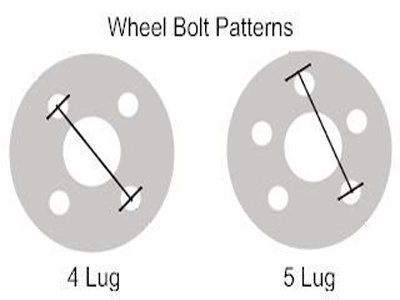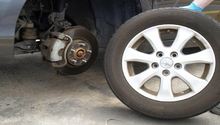Toyota Camry: Tires General Information and Specs
There is more to know about tires than just brands. Here is all the general information you need to know about your Toyota Camry's tires, from wheel bolt patterns to proper maintenance.
This article applies to the Toyota Camry (1997-2011).
Choosing and maintaining the right tires for your Camry will insure that you receive good handling, ride quality, brake performance, and safety from your investment. The type of tire that is best for you depends on what your individual needs are and the conditions you generally drive your Toyota Camry in.
The three basic types of tires are summer, winter/snow tires, and all-season tires. Summer tires are designed for warm weather driving, but return poor traction in snowy or cold conditions. Likewise, winter/snow tires are designed to give you maximum traction in cold and snowy weather, but don't do very well when the roads are dry. All-season tires provide a compromise between the two, offering year round capability, but not maximum traction in either.
The Camry owner's manual and door jamb placard contain the manufacturer's recommended tire sizes for your car, as well as the recommended tire pressures. Oftentimes, they contain a range of sizes that will work best on your particular car or model.

Wheels
Wheels are one of the best ways to upgrade the looks and/or performance of your car. There are limitless number of options available in the aftermarket with many different sizes and styles. OEM style wheels offer a guaranteed fit and can be found easily and cheaply if you buy them used. No matter which route you take, be sure and pay close attention to wheel specs to make sure they will fit your car properly. Take note of the diameter, width, and offset. Also, keep in mind that the weight and size of the wheels can have an impact on your car's performance (positively or negatively), handling, and fuel economy. Lighter wheels generally provide better handling, economy, and performance over heavier wheels.

Wheel Bolt Patterns
You will also want to make sure that the wheels you purchase match your car's bolt pattern. Up until the 2003 model year, Toyota used a four lug, 100mm bolt pattern, and a 14 x 5.5" wheel on the Camry. In 2003 they switched to the five lug, 100mm bolt pattern, and a 15 x 6" wheel. In 2004, they switched to a five lug, 114.3mm pattern.
To put it simply, four lug wheels have four holes in them for mounting to the car, while five lug wheels have five holes. The millimeter measurements noted above refer to the diameter of the wheel's bolt circle.

Scheduled Maintenance
Tires should be checked every two weeks or so. Visually check them and make sure you don't have any damage or excessive/uneven wear. You can use a penny to check the tread's depth by inserting it, with Lincoln's head down facing you, in between the tread. If his head is completely showing, you have around 2/32" of tread left and should replace the tire.
Also be sure and check your tire pressure at least once a month when it is cool outside. Use an air pressure gauge to measure and compare to the recommended PSI range on the tire or on your door jamb placard. Add or remove air as necessary to keep it within the recommended range. This will greatly extend the life of your tires.
Also be sure and rotate your tires every time you change your oil, or when called in for your Camry's scheduled maintenance section of your owner's manual. This will help to ensure that your tires wear evenly and last as long as possible.

Tire General Information and Specs
Related Discussions
- Will These Wheels Fit My Camry? - CamryForums.com
- Alloy Wheels For My Camry - CamryForums.com
- Need Help with Camry Wheels and Tires - CamryForums.com






